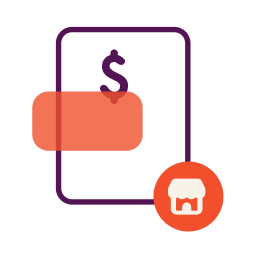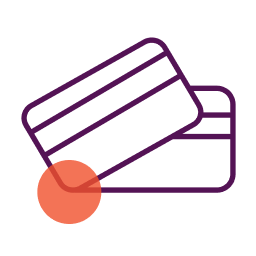With so many software startups in the current landscape, it seems like only a special few find the right formula for scaling their early-stage successes. But there are ways to replicate the early wins and repeat them on a large, long-term scale. You’ll need a comprehensive plan for achieving sustainable growth if you want customers to stay engaged in your brand and continue buying your software service.
In this post, we’ll go over seven ideas that will help you grow more efficiently and ensure you get the highest return on investment (ROI) from your efforts.
What Does It Mean To Scale a SaaS (Software as a Service) Company?
SaaS scaling means you aim to make higher profits — without massively increasing your budget. To scale a SaaS company, you may need to access new markets, acquire a wider customer base, and add the right tech or software to your business’s tool set. It takes time to scale a SaaS business, and it’s not going to happen without using resources and time.
However, entrepreneurs need to make sure they’re investing the right resources and time into the right places. Keep reading to find out the best way to scale up your SaaS business.
How to Scale a SaaS Company
Let’s explore each of the seven steps toward making sure your SaaS company growth rate skyrockets this year.
1. Funding your SaaS startup for growth
You know what they say: you have to spend money to make money. If you want your startup to remain profitable, you have to invest in all the right areas.
But as a young SaaS startup, you will likely run into roadblocks where it seems like you have to choose between investing in one area of your business or another.
Getting small business loans is one way to quickly get funding so that you don’t need to choose between two different tactics that you know will help your business grow. Business credit cards can also be a huge asset in increasing immediate cash flow.
Outside funding helps you address your biggest financial needs while simultaneously focusing on the bigger challenges of running a SaaS startup. Funding ensures you have money in the bank even if your revenue is in a state of variation.
Small business loans help you:
- Handle the costs of any unexpected events that might occur
- Pay for one-off projects and other operational obstacles
- Afford to stay in compliance with regulatory agencies
Even if you’ve had less than favorable experiences with past investors or bank loans, there are options for getting the funding that you need. Monitoring and establishing your business credit scores with Nav is another move you should make to get your company’s foundation in place and ensure you qualify for funding.
2. Target new audiences and expand to new markets
If you want to keep growing, your company needs customers. To keep these customers around and lower churn rate, they need to have a positive customer experience. In these early stages of your business, you should be spending the majority of your effort and budget on winning new customers. Here are the tactics that will give you the highest return.
Lead generation
To continue selling your software, you need fresh potential customers coming into your sales pipeline. Lead generation can become one of the most expensive areas for your business, but it pays off to invest heavily in effective lead generation tactics.
Inbound marketing is a staple for most SaaS companies. Inbound marketing strategies like content marketing, search engine optimization, and social media media marketing can cost your company little to nothing, aside from hiring and managing employees to execute them.
We suggest outbound marketing efforts as well to back up your inbound tactics. This involves sales development reps (SDRs) following up with marketing leads to schedule sales appointments for your sales team.
When inbound and outbound work together (a concept we like to call an allbound strategy), you get an always-on sales engine that builds genuine one-on-one customer relationships.
Brand awareness
As a new company, lack of brand recognition can be a big barrier to convincing buyers to choose your service over others. Though it’s hard to put an exact dollar amount on the ROI from good branding, it’s an important step in establishing yourself as a competitor in the software space and creating loyal customers.
When brand messaging and brand elements like your logo, website, and font choices are appealing and recognizable, it lends valuable credibility to your product. With a cohesive brand, buyers easily make the connection between your visuals and the quality of what you sell.
Customer renewals
Customer acquisition cost is also a key metric: It costs five times more to acquire a new customer than it does to retain a new one. This is why it’s so important to do everything in your power to ensure customer success and increase customer retention for your software.
You can reduce customer churn by putting customer satisfaction above all else. Your customers’ needs must come first. Some of the best ways to strengthen relationships with your existing customers include:
- Guiding them through the onboarding and implementation process of your software to ensure they get full utility of your solution.
- Providing comprehensive customer service through popular channels like phone, email, web chat, and social media.
- Regular health checks to ensure the software is still working for them and to suggest any ways to maximize their use of the product.
- Offering a referral program as part of your sales strategy to give a discount to current and potential customers.
3. How automation can help
Automation is one of the most popular ways that growing businesses stay competitive these days.
The biggest benefit: by automating your day-to-day business processes, you can improve the efficiency of your operations and get more work done with less effort.
Of course some drawbacks are that many automation platforms require special technical expertise to configure and maintain. On top of that, pricing for a quality automation platform can land anywhere from hundreds to thousands of dollars.
Still, automating tasks like email marketing or lead nurturing can make all the difference for the growth of your business.
4. Don’t be afraid to outsource if needed
As a startup, you likely have a small team and are just getting your footing when it comes to developing the core competencies of your business.
If you haven’t yet considered outsourcing some of your business functions to a specialized firm, it can actually be a smart way to recruit experienced talent without the costs of hiring and managing, as well as cut operational costs in the long run.
Many SaaS startups see success by outsourcing processes like marketing, lead generation, sales, and customer service because it allows them to focus their efforts on developing their product and high-level strategy. A few other reasons to outsource include:
- The specialized firm has subject matter expertise in the areas for which you hire them
- You avoid all the costs of office space and equipment for outsourced team members
- The outsourced firm is responsible for maintaining employees in certain high-turnover roles
Outsourcing may seem like a big investment for your business. But there are options for small businesses to fund an investment like this that will help you remove some of the uncertainty.
5. Build a strong company culture and team
If your entire staff is excited about your product and your mission, they will bring that energy to addressing the pain points of your customers. Customer support will improve — and get better ratings — if your team feels good about their work. Your employees’ sentiment affects everything your company puts out, from copy to app design to your entire SaaS product, so it’s essential to check in on the health of your team regularly. Ask for honest opinions and feedback, and make real changes as needed.
6. Optimize and improve your product
It’s best to just put something into the world instead of seeking perfection. However, once your SaaS product is launched, you’ll need to work on improving it and updating it continuously. Read customer reviews, do market research, and reach out to your target audience via surveys. Use this information and your know-how to make upgrades, add more options, and increase customer satisfaction. Once your product offers more, you can update your pricing strategy to reflect your current product.
7. Establish clear growth goals
You can’t know how to get where you’re going until you establish exactly where your destination is. If you want to increase customer lifetime value, know exactly which marketing efforts will get you there. If increasing annual revenue is a top goal, figure out exactly which sales process changes will be needed. All of these objectives work together and in tandem, but try not to aim for too many at once. Otherwise you risk fracturing your team’s attention and energy. No matter your goals, provide a roadmap for your employees so they see the overall picture.
Are You Still a SaaS Startup if You’re Scaling?
The definition of a startup depends on who’s talking, but companies can be considered startups for years. Scaling is part of the startup lifecycle. Most SaaS startups plan to grow from day one.
However, it’s essential that you follow these suggestions to make sure you’re managing your growth well and that your employees are content. The idea that you can scale overnight is a myth, so you’ll need to make sure you hire the right people who are willing to be flexible with the upcoming growing pains. You’ll also need to continuously make sure that your employees are being heard so you can course correct as needed.
Nav’s Verdict
If you want long-term growth for your startup, you need to know where to focus your strategy so that you get the most out of your efforts. Knowing how to get customers, how to retain them, and how to make your processes more efficient are some good first steps.
Spending your budget wisely is critical for sustainable scalability, but you shouldn’t cut any corners in your plan for growth. Invest in the right areas, and you’ll reap the rewards.
This article was originally written on March 6, 2020 and updated on February 8, 2023.



Have at it! We'd love to hear from you and encourage a lively discussion among our users. Please help us keep our site clean and protect yourself. Refrain from posting overtly promotional content, and avoid disclosing personal information such as bank account or phone numbers.
Reviews Disclosure: The responses below are not provided or commissioned by the credit card, financing and service companies that appear on this site. Responses have not been reviewed, approved or otherwise endorsed by the credit card, financing and service companies and it is not their responsibility to ensure all posts and/or questions are answered.